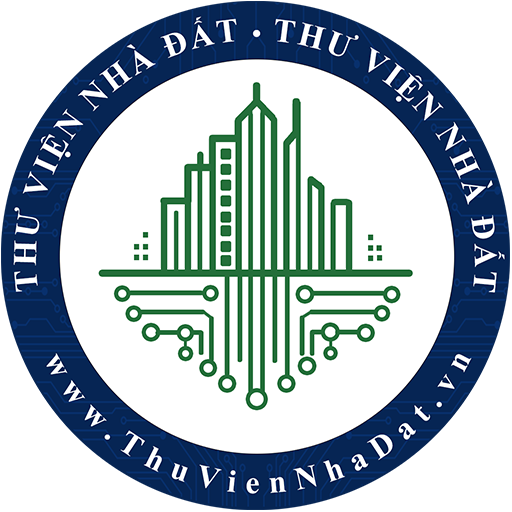|
THE
PRIME MINISTER |
SOCIALIST
REPUBLIC OF VIETNAM |
|
No. 1017/QD-TTg |
Hanoi, September 21, 2024 |
THE PRIME MINISTER
Pursuant to the Law on Organization of the Government dated June 19, 2015; the Law on amendments to the Law on Organization of the Government and the Law on Organization of Local Governments dated November 22, 2019;
Pursuant to Resolution No. 111/NQ-CP dated July 22, 2024 of the Government on promulgation of the Government's action program to implement Resolution No. 29-NQ/TW dated November 17, 2022 of the 6th Conference of the 13th Party Central Committee on continuing to promote industrialization and modernization of the country to 2030, with a vision to 2045;
Pursuant to Conclusion No. 64-KL/TW dated October 18, 2023 of the 8th Conference of the 12th Party Central Committee on socio-economic development in 2023 - 2024;
Pursuant to Resolution No. 50/NQ-CP dated May 20, 2021 of the Government on the Government's Action Program to implement the Resolution of the 13th National Congress of the Party;
Pursuant to Resolution No. 124/NQ-CP dated August 7, 2023 of the Government on the regular Government meeting in July 2023;
Considering the proposal of the Minister of Planning and Investment in the Statements and reports: No. 2274/TTr-BKHDT dated March 27, 2024, No. 4068/TTr-BKHDT dated May 28, 2024, No. 5537/TTr-BKHDT dated July 12, 2024, No. 6857/BC-BKHDT dated August 27, 2024, No. 7571/TTr-BKHDT dated September 18, 2024, and No. 7670/TTr-BKHDT dated September 21, 2024 issued together with the Project "Developing human resources for the semiconductor industry to 2030, with a vision to 2050".
HEREBY DECIDES:
Article 1. Approval for the Program “Developing human resources for the semiconductor industry to 2030, with a vision to 2050” ” (hereinafter referred to as the Program) with the following contents:
1. The development of human resources for the semiconductor industry must be aligned with the Party's guidelines, the country's socio-economic development strategy, the semiconductor industry's development strategy, Vietnam's orientation towards high-quality human resource development, and global development trends.
2. The training of human resources for the semiconductor industry is a "breakthrough of breakthroughs" in high-quality human resource training. It is a top priority for the development of the semiconductor industry in Vietnam and is eligible for special, breakthrough, and competitive mechanisms and policies regarding investment incentives, the use of state budget, public assets, attracting experts and talents, and providing financial support for lecturers and learners.
3. The development of human resources for the semiconductor industry must be aligned with the development of the semiconductor ecosystem, associated with training in basic science and specialized science, in line with the roadmap and fields in which Vietnam has strengths. Promote the relationship between the three pillars: State - School - Enterprise, in which the State plays a constructive role, the School plays a central role, and the Enterprise plays a companion and supporting role, to improve the quality of training, meet market requirements.
4. Diversify training formats (regular training, conversion training, retraining, advanced training) and training levels (bachelor's, master's, doctoral).
5. Diversify funding sources for semiconductor industry training, including state, enterprise, and society resources, promoting public-private partnership in training. The State will make initial investments and ensure resources for implementing tasks and solutions within the Program, while simultaneously establishing mechanisms and policies to mobilize social resources, especially from enterprises and private higher education institutions, to participate in training human resources for the industry.
6. International cooperation plays a crucial and ongoing role in developing human resources for the semiconductor industry. International cooperation efforts in developing semiconductor human resources must be systematic, effective, and focused, aligning with Vietnam's priorities at each stage and the specific strengths of each partner.
1. General objectives
a) By 2030, Vietnam aims to train and develop a high-quality semiconductor workforce, with a focus on semiconductor microchip design, packaging, and testing; gradually mastering semiconductor manufacturing technologies; and training at least 50,000 university graduates to serve all stages of the semiconductor value chain.
b) By 2050, Vietnam aims to have a strong workforce that can participate in the global semiconductor value chain and meet both the quality and quantity requirements of Vietnam's semiconductor industry.
2. Specific objectives
a) By 2030:
- Train at least 50,000 university graduates or higher for the semiconductor industry, including:
+ At least 42,000 engineers and bachelor's degree holders; at least 7,500 master's students and 500 postgraduate students;
+ At least 15,000 personnel for design, at least 35,000 personnel for manufacturing, packaging, testing, and other stages of the semiconductor industry;
+ At least 5,000 specialists in artificial intelligence for the semiconductor industry.
- Provide in-depth semiconductor training for 1,300 Vietnamese lecturers at research institutes, higher education institutions, training support facilities, and enterprises.
- Based on budgetary considerations, the state budget will invest in the establishment, upgrade, and modernization of 4 national-level shared semiconductor laboratories and grassroots semiconductor laboratories at 18 public higher education institutions in the North, Central, and South regions to support semiconductor workforce development.
b) By 2050:
- Meet the full demand in Vietnam for both the quantity and quality of human resources in all stages of the semiconductor value chain;
- Vietnamese educational institutions, especially higher education institutions, are fully capable of training high-quality human resources to serve the development of Vietnam's semiconductor industry.
a) Research and develop specific mechanisms and policies to promote cooperation between the State - School - Enterprise, with a number of policy orientations including:
- Simplify administrative procedures, offer investment incentives, financial, accounting, and tax benefits to facilitate investment, support, and funding for training, research and development, technology commercialization, technology and enterprise incubation to develop human resources for the semiconductor industry at research institutes, innovation centers, higher education institutions, and training support facilities;
- Build an effective cooperation model between the 3 pillars: State - Schools - Enterprises, clearly defining the rights and responsibilities in training and developing human resources;
- Develop public-private partnership mechanisms and models to combine state budget and domestic and foreign private sector capital. Clarify the operation mechanisms of national-level shared semiconductor laboratories as public assets; establish favorable mechanisms to encourage private sector participation in co-management, maximizing the dynamism and creativity of the private sector in operating, sharing infrastructure, and finance in the utilization and use of public assets;
b) Research and develop mechanisms and policies to attract domestic talents, overseas Vietnamese, international experts in the semiconductor and artificial intelligence industries to work in Vietnam:
- Implement competitive salary and bonus schemes comparable to countries in the region.
- Offer preferential personal income tax policies;
- Provide support for long-term work visas and simplify administrative procedures for international experts;
- Provide support for education, healthcare, social welfare, and accommodation for relatives of highly qualified human resources, lecturers and senior experts working in the semiconductor industry in Vietnam.
c) Research, develop and implement talent training programs for the semiconductor industry; establish a demand-driven mechanism whereby agencies and enterprises can place orders for specific skill sets with higher education institutions.
d) Research, develop and improve specific financial support mechanisms for learners, including scholarships, tuition waivers, and reductions for programs approved by the Ministry of Education and Training and other competent authorities for the implementation of this Program.
dd) Research and develop a specific mechanism to facilitate investment in and operation of semiconductor laboratories:
- Simplify procedures for investment, bidding, and selection of suppliers for purchasing equipment for training, incubation, research, and development, especially for national-level shared semiconductor laboratories and grassroots semiconductor laboratories to train human resources in in the semiconductor industry;
- Establish criteria for partner selection and operational mechanisms to ensure smooth operations and enhance the proactiveness and accountability of the managing agency and project investor for semiconductor laboratory investment projects;
- Establish a sharing mechanism for facilities, equipment, and laboratories that are public assets.
e) Research and develop preferential mechanisms, tax and fee exemptions and reductions to attract domestic and foreign investment in semiconductor human resource training.
a) Higher education institutions, training support facilities, and relevant organizations shall proactively allocate or mobilize legal resources to invest in and develop semiconductor laboratories to meet the training and research needs of the unit.
b) The central budget will support the investment in equipment and licensed software to establish, upgrade, and modernize grassroots semiconductor laboratories at 18 public higher education institutions to serve the training of human resources for the semiconductor industry. The expected public higher education institutions listed in Appendix 02 issued with this Decision will be prioritized for investment. During the implementation process, the list of expected public higher education institutions may be adjusted depending on actual conditions and proposals.
c) The central budget will support the investment, construction, upgrading, and modernization of four national-level shared semiconductor laboratories at the National Innovation Center, Hanoi National University, Ho Chi Minh City National University, and Da Nang City. These laboratories will have a convenient mechanism for operation and use of public assets, in specific:
- The national shared laboratory located at the National Innovation Center, in collaboration with Hanoi University of Science and Technology, will focus on design, packaging, and testing of microchips and serve training, technology and enterprise incubation, and artificial intelligence applications;
- The national shared laboratory at Hanoi National University will focus on the production of microchips and semiconductor devices;
- The national shared laboratory at Ho Chi Minh City National University will cover all stages of microchip design, manufacturing, packaging, and testing;
- The national shared laboratory in Da Nang, led by Da Nang People's Committee and coordinated with Da Nang University, will focus on microchip design and testing;
- Based on actual needs, relevant parties including central and local authorities, higher education institutions, and training support facilities will allocate resources to operate and invest in equipment and software for these laboratories.
d) National shared semiconductor laboratories and grassroots semiconductor laboratories serving the training of human resources in the semiconductor industry shall make maximum use of existing facilities, organizational apparatus, and human resources to minimize the creation of new administrative apparatus and ensure the efficient and economical use of the state budget.
dd) In addition to the central budget, localities shall proactively allocate funds from local budgets or mobilize other socialized and legal capital sources to invest in semiconductor laboratories according to the actual needs of the locality, ensuring efficiency and avoiding waste.
3. Group of tasks and solutions on training organization
a) Prioritize scholarships for students enrolled in talent development programs, and for those pursuing semiconductor-related programs as defined by the higher education institutions.
b) Training human resources at the graduate level:
- Review, develop, promulgate, and guide the implementation of standards for semiconductor chip training programs;
- Develop majors and specializations related to microchip design, semiconductor technology, artificial intelligence, etc. to serve the semiconductor industry in the higher education system;
- Develop talent training programs with the participation of international lecturers;
- Develop training programs that meet international standards;
- Mobilize and connect with domestic and international partners to provide scholarships for engineers and bachelors to study majors related to the semiconductor industry.
c) Training human resources at the postgraduate level:
- Develop and implement exchange programs and provide scholarships for postgraduate studies both domestically and internationally;
- Strengthen cooperation among research institutes, higher education institutions, and enterprises in implementing master's and doctoral training programs.
d) Short-term training:
- Collaborate with reputable international partners to provide short-term training programs and certifications in microchip design, semiconductor technology, and artificial intelligence for students and related workforce seeking career transitions;
- Implement retraining, transition training, advanced training, and on-the-job training programs, and issue certifications for microchip design workers, semiconductor technology professionals, or graduates of relevant majors by connecting enterprises with higher education institutions and training support facilities in the semiconductor industry.
dd) Lecturer training:
Organize training, research, and work programs for lecturers at higher education institutions, training support facilities, research institutes, and large enterprises in the semiconductor industry both domestically and internationally. In specific:
- The state budget will support higher education institutions, training support facilities, and research institutes with funding for in-depth training programs for lecturers;
- Prioritize the selection and assignment of lecturers to pursue postgraduate studies in the semiconductor industry under the Project approved by Decision No. 89/QD-TTg dated January 19, 2019 of the Prime Minister, as well as agreement-based scholarships and other scholarships;
- Encourage lecturers to proactively participate in in-depth training programs and research projects in the semiconductor field to enhance their capabilities and meet teaching requirements;
- Collaborate with domestic and international organizations and enterprises to provide in-depth training for lecturers;
- Prioritize the evaluation and selection of research proposals from lecturers in the semiconductor industry.
e) Develop curriculum content, frameworks, lecturer standards, and graduate quality standards for programs related to the semiconductor industry. Establish a management, accreditation, and inspection mechanism to standardize and improve the quality of education and training in the semiconductor industry.
g) Encourage students to pursue STEM (science, technology, engineering, and mathematics) fields, specialized English, soft skills, entrepreneurial mindset, and artificial intelligence as a foundation for studying semiconductor-related fields.
h) Encourage businesses related to the semiconductor industry and private higher education institutions to participate in training human resources for the semiconductor industry.
4. Group of tasks and solutions on resource mobilization and diversification
a) In addition to the central budget, diversify funding sources to implement the Program, ensuring sufficient and timely mobilization in accordance with the prescribed structure; strengthen mobilization of funds from local budgets, legitimate contributions from enterprises, and solicit donations from domestic and foreign organizations and individuals.
b) Promote public-private partnerships in semiconductor human resource training. Encourage enterprises and private training institutions to establish a Fund for training and developing human resources for the semiconductor industry.
c) Relevant ministries, central and local agencies, higher education institutions, research institutes, and organizations shall integrate other programs and projects from domestic sources, ODA, and preferential loans from foreign donors approved by competent authorities, and other legal sources to implement tasks, solutions, programs, and projects within the scope of the Program.
d) Local authorities shall proactively allocate local budgets, mobilize private sector involvement, and other legal capital sources to support the implementation of tasks, solutions, programs, and projects within the scope of the Program assigned to the localities, and to carry out training and development of human resources for the semiconductor industry in their localities.
dd) Enterprises, training institutions, public and private training support facilities, and relevant agencies and organizations shall proactively allocate funds from their own budgets or mobilize private sector involvement to train human resources for the semiconductor industry as needed.
e) Enterprises with orientations to develop the semiconductor industry shall closely cooperate with higher education institutions in developing and utilizing human resources.
a) Incubate enterprises and encourage startups in the semiconductor industry, facilitate the development of enterprises supporting the semiconductor industry. Assist enterprises in accessing labor, financial, and technological resources to ensure the rapid and sustainable development of the innovation ecosystem in the semiconductor industry.
b) Attract talents and cooperate with senior personnel from major semiconductor corporations to participate in teaching and research at higher education institutions, research institutes, and training and incubation centers to develop domestic businesses.
c) Develop a semiconductor and artificial intelligence innovation network comprising Vietnamese experts and intellectuals overseas, as well as foreign experts with deep expertise who can contribute to the development of Vietnam's semiconductor industry.
d) Encourage and support cooperation between schools, research institutes, innovation centers, and domestic and foreign organizations and enterprises to improve the quality of semiconductor human resource training, support students and lecturers in internships and practical work at organizations, enterprises, and research institutes, and establish scholarships to support training in the field.
6. Group of tasks and solutions on research and development
a) Promote the development of research groups, especially strong research groups, and strengthen the linkage between postgraduate training and research and development activities in the semiconductor field through the implementation of scientific and technological tasks at all levels.
b) Prioritize the allocation of resources and annual state budget to support and fund programs and tasks for research and development of semiconductor chips at research institutes, higher education institutions, innovation centers, and enterprises.
a) Communicate, disseminate information, and raise awareness among agencies, organizations, enterprises, and the entire society about the role and significance of the Program, the semiconductor industry, and STEM fields, fostering a vibrant emulation movement to develop human resources for the semiconductor industry and the Program's contents.
b) Strengthen international cooperation, especially with countries and territories developing the semiconductor industry, to exchange experiences in semiconductor education and research; encourage Vietnamese educational institutions to establish and implement cooperative training programs, lecturer and student exchanges with reputable semiconductor education and research institutions worldwide.
c) Organize rewards for agencies, organizations and individuals with innovative ideas and approaches to developing human resources for the semiconductor industry.
Funding for the Program shall be allocated from the state budget, including the central budget and local budgets in accordance with the state budget's balancing capacity as prescribed by the Law on State Budget and regulations on public investment; investment and sponsorship from enterprises, organizations, individuals, and other legal sources. Specifically, the state budget shall be allocated to support the following tasks and solutions:
1. Development and investment capital for the investment in the formation, upgrading, and modernization of 4 national-level shared semiconductor laboratories at the National University of Hanoi, the National University of Ho Chi Minh City, the National Innovation Center in Da Nang City, and grassroots semiconductor laboratories serving the training of human resources for the semiconductor industry at 18 public higher education institutions; support for investment in equipment, machinery, and software for laboratories serving the development of human resources for the Vietnam semiconductor industry in accordance with the law on public investment.
2. Regular expenditure sources for performing the following tasks: training; maintenance, repair, and operation of semiconductor laboratories; research and development; building ecosystems, facilitating job placement for human resources; communication, rewards, etc. in accordance with the law on the state budget.
1. Ministry of Planning and Investment
a) Acts as the focal point for coordinating, monitoring, and evaluating the Program's implementation; annually reports to the Prime Minister and the National Steering Committee for Semiconductor Industry Development, proposing solutions to address any challenges or obstacles; submits to the Prime Minister for consideration of adjustments to the Program's objectives, tasks, and solutions to meet the evolving needs of the Vietnamese semiconductor industry.
b) Establishes an expert council to provide advisory services, conduct evaluations, and recommend the selection of investment projects for semiconductor laboratories.
c) Based on the Program's viewpoints, objectives, tasks, and solutions, as well as the review results and recommendations from ministries, central and local agencies, and the expert council, the Ministry of Planning and Investment shall take the lead in compiling a list of tasks and projects expected to use central budget public investment capital and a capital allocation plan (from medium-term and annual public investment capital and other sources for development investment), and report to the competent authority for consideration and decision on capital notification, budget allocation, and public investment capital plan for ministries, central and local agencies, to improve investment procedures, allocate capital for project implementation in accordance with the law on public investment and other relevant laws.
d) Establish a Working Group to implement the Program, headed by the Minister of Planning and Investment. The Working Group shall include leaders from relevant ministries, sectors, localities, research institutes, universities, organizations and enterprises.
dd) Promote the formation and development of ecosystems, innovation centers, incubators, and innovation networks in the semiconductor industry to facilitate the development of semiconductor industry enterprises.
e) Take charge and cooperate with the Ministry of Education and Training, the Ministry of Information and Communications, the Ministry of Science and Technology, experts, scientists, and relevant agencies to evaluate and select priority investment projects for each phase, in line with market demands, and report to the competent authorities as prescribed by law.
g) Take charge in implementing tasks and solutions assigned to the Ministry of Planning and Investment as specified in Appendix 01.
h) Guide and urge ministries, People's Committees of provinces and centrally affiliated cities (hereinafter referred to as provinces), and relevant agencies to implement tasks and solutions of the Program; submit an annual report to the Prime Minister summarizing the progress and achievements of the Program, as carried out by relevant agencies before December 20 each year.
2. Ministry of Information and Communications
a) Communicate to raise awareness of agencies, organizations, enterprises and the entire society about the development of human resources in the semiconductor industry. Develop and implement a communication program to enhance awareness of the importance of science, technology, engineering and mathematics (STEM) fields and career opportunities in the semiconductor industry.
b) Coordinate with the Ministry of Planning and Investment to implement the Program's contents, ensuring alignment with the objectives of the Vietnam Semiconductor Industry Development Strategy to 2030 with a vision to 2050.
3. Ministry of Education and Training
a) Direct and guide higher education institutions in developing project proposals for training high-skilled human resources to serve the development of the semiconductor industry; select training programs from higher education institutions and issue training plans in accordance with the Program's objectives.
b) Take charge in developing, issuing, and guiding the implementation of training program standards for semiconductor microchips. Initiate talent programs to serve the semiconductor industry at higher education institutions.
c) Take charge and cooperate with the Ministry of Planning and Investment to research, propose, and implement a model of cooperation between the state, schools, and enterprises in training human resources for the semiconductor industry.
d) Serve as the focal point for consolidating and coordinating the 5-year and annual training plans of higher education institutions for degree programs; promptly propose adjustments to the objectives, tasks, and solutions for training semiconductor human resources of this Program.
dd) Take charge in implementing the tasks and solutions assigned to the Ministry of Education and Training as stated in Appendix 01.
4. Ministry of Science and Technology
a) Take charge and cooperate with the Ministry of Information and Communications and relevant agencies, organizations, and enterprises to promote research and technology transfer linked to the development of human resources for the semiconductor industry.
b) Take the lead and guide the implementation of scientific and technological tasks for the semiconductor industry; approve the list and balance the budget for implementing national-level scientific and technological tasks for the semiconductor industry.
c) Promote the development of strong research groups, strengthen the connection between postgraduate training and research and development activities in the semiconductor field through the implementation of scientific and technological tasks at all levels.
d) Preside over the consolidation of proposals and report to competent authorities to prioritize the allocation and balancing of the annual state budget to support research and development tasks for semiconductor products at research institutes, universities, innovation centers, and enterprises.
a) a) Based on proposals from ministries, central and local agencies and the feasibility of balancing the central budget, compile and submit to the competent authority for allocation in the regular expenditure budget of ministries, central and local agencies to implement the tasks and solutions of the Program in accordance with the law on the state budget.
b) Research and compile proposals from relevant ministries and agencies, report to competent authorities for consideration of amendments to tax, fee, and preferential credit policies for students to attract and train human resources for the semiconductor industry.
c) Research and compile proposals from relevant ministries and agencies to review, amend, supplement, or issue new guidelines for the management and use of regular expenditure from the state budget to implement the Program.
6. Ministry of National Defense
Direct relevant units such as research institutes, higher education institutions, affiliated defense enterprises, etc. to participate in implementing training programs and developing human resources for the semiconductor industry, with a particular focus on applications for national defense and security.
7. Ministry of Public Security
a) Research and propose visa mechanisms and policies to facilitate the attraction of foreign experts and scientists to Vietnam to participate in training, research and work in the semiconductor industry.
b) Direct relevant units such as research institutes, affiliated higher education institutions, etc. to participate in implementing training programs and developing human resources in the semiconductor industry, with a particular focus on applications for national defense and security.
c) Preside over and implement activities to grasp the policies and strategies of other countries regarding the semiconductor industry in order to research and advise the Party, State, and Government on formulating appropriate foreign policies, improving the legal system, and mechanisms to attract foreign investment in the semiconductor industry while ensuring national defense, security, and social order. Research, develop, and transfer technology to master semiconductor microchip technology and ensure national defense and security.
8. Ministry of Foreign Affairs
a) Monitor, update and exchange experiences with other countries regarding global trends in semiconductor industry investment and human resource development. Simultaneously, promote economic diplomacy while conducting focused research and activities to attract human resources for semiconductor industry training.
b) Organize foreign affairs activities and facilitate international cooperation in training, attracting funding, aid, and scholarships for training activities; facilitate job placement for Vietnamese semiconductor human resources in countries around the world.
9. Ministry of Labor, War Invalids and Social Affairs
a) Research and propose mechanisms and policies on work permits for foreigners to facilitate the attraction of foreign experts and workers to Vietnam for employment in the semiconductor industry in general and in semiconductor human resource training in particular.
b) Direct vocational training institutions to provide semiconductor industry human resources training that meets market demands.
10. State Bank of Vietnam and Vietnam Bank for Social Policies
Research, review, and propose specific mechanisms and policies on savings and remittance facilitation for foreign experts working in Vietnam's semiconductor industry.
a) Ministries, ministerial-level agencies, government agencies, People's Committees of provinces shall, in accordance with their assigned functions and tasks, proactively cooperate with the Ministry of Planning and Investment in implementing the tasks and solutions of the Program. They shall develop and implement both a phased and an annual plan for carrying out the Program's tasks and solutions, ensuring alignment with the functions, tasks, potentials, and advantages of the localities.
b) Based on the viewpoints, objectives, tasks and solutions of the Program, proactively review, develop estimates, lists and expected capital allocations for each task and project of the Program, submitting to the Ministry of Planning and Investment for development investment, to the Ministry of Finance for recurrent expenditure, and to relevant ministries and agencies for consolidation and reporting to the competent authority as prescribed.
c) Promote international cooperation, especially with countries and territories with strengths in the semiconductor industry.
d) Review, research, decide within the scope of authority, or submit to the competent authority for decision on the allocation of budget funds for scholarships and preferential policies for local students studying semiconductor engineering; implement the tasks and solutions of the Program.
dd) Localities shall prioritize the allocation of local budget capital to support the implementation of tasks, solutions, and projects within the scope of the Program, as well as provide funding for semiconductor industry training at higher education institutions in accordance with the law on the state budget, public investment, and related laws.
e) Encourage the organization of competitions, awards, and commendations to honor agencies, organizations, and individuals with innovative and creative ideas, initiatives, and breakthrough approaches in developing human resources for the semiconductor industry, contributing to high efficiency and community benefits.
g) Proactively develop or propose solutions to competent authorities to address difficulties and obstacles, develop, amend, and supplement mechanisms, policies, and solutions for implementing programs, tasks, and projects under the Program, and support, encourage, and promote the development of human resources for the semiconductor industry within their management scope.
h) Consolidate, evaluate, and report on the implementation results of the Program to the Ministry of Planning and Investment by November 30th each year for consolidation and reporting to the Prime Minister.
Article 2. This Decision comes into force from the date of signing.
Article 3. Ministers, heads of ministerial-level agencies, heads of government agencies, Presidents of People's Committees of provinces, and heads of relevant agencies shall implement this Decision./.
|
|
PP.
PRIME MINISTER |
LIST OF TASKS AND SOLUTIONS FOR IMPLEMENTING THE PROGRAM
FOR DEVELOPING HUMAN RESOURCES FOR THE SEMICONDUCTOR INDUSTRY TO 2030, WITH A
VISION TO 2050
(Issued together with Decision No. 1017/QD-TTg dated September 21, 2024 of
the Prime Minister)
|
No. |
Tasks and solutions |
Leading agency |
Coordinating agency |
Submitted to |
Time for performance |
|
I |
GROUP OF TASKS AND SOLUTIONS FOR RESEARCH, DEVELOPMENT AND IMPROVEMENT OF SPECIFIC MECHANISMS AND POLICIES |
||||
|
1 |
Research and propose the development of specific mechanisms and policies on investment incentives, resource mobilization, use of state budget, public assets, laboratory sharing mechanism, attracting experts, talents... to develop human resources in the semiconductor industry. |
Ministry of Planning and Investment |
Ministry of Finance, relevant ministries, central and local authorities |
Competent authorities |
2024-2025 |
|
2 |
Review, research, propose amendments to mechanism and policies on tuition exemption and reduction, scholarships for students pursuing semiconductor-related studies both domestically and internationally. |
Ministry of Education and Training |
Ministry of Finance, relevant ministries, central and local authorities |
Government |
4th quarter/2025 |
|
II |
GROUP OF TASKS AND SOLUTIONS ON INVESTMENT IN INFRASTRUCTURE, FACILITIES, AND TECHNOLOGY FOR TRAINING |
||||
|
A |
Develop a resource plan to implement the Program |
||||
|
1 |
Consolidate and develop a public investment plan utilizing central government budget for the Program. |
Ministry of Planning and Investment |
Ministry of Planning and Investment, Ministry of Finance, Ministry of Education and Training, Ministry of Information and Communications, Ministry of Science and Technology and localities and relevant agencies |
Competent authorities as prescribed by the law on public investment |
2024 - 2026 (Based on progress and funding availability) |
|
B |
Investment in semiconductor laboratories |
||||
|
1 |
Develop investment projects, upgrade grassroots semiconductor laboratories to serve the training of human resources for the semiconductor industry at public higher education institutions. |
Public higher education institutions are given priority for investment consideration |
Ministry of Planning and Investment, Ministry of Finance, Ministry of Education and Training and relevant agencies |
Competent authorities as prescribed by the law on public investment |
2025 - 2027 (Based on progress and funding availability) |
|
2 |
Develop an investment project for a national-level shared semiconductor laboratory at Ho Chi Minh City National University . |
Ho Chi Minh City National University |
Ho Chi Minh City People's Committee, Ministry of Planning and Investment, Ministry of Finance and relevant agencies |
Competent authorities as prescribed by the law on public investment |
2025 - 2027 (Based on progress and funding availability) |
|
3 |
Develop an investment project for a national-level shared semiconductor laboratory at Hanoi National University. |
Hanoi National University |
Ministry of Planning and Investment, Ministry of Finance, Ministry of Education and Training and relevant agencies |
Competent authorities as prescribed by the law on public investment |
2025 - 2027 (Based on progress and funding availability) |
|
4 |
Develop an investment project for a national-level shared semiconductor laboratory at National Innovation Center. |
Ministry of Planning and Investment |
Hanoi University of Science and Technology, Ministry of Finance, Ministry of Education and Training and relevant agencies |
Competent authorities as prescribed by the law on public investment |
2024 - 2025 (Based on progress and funding availability) |
|
5 |
Develop an investment project for a national-level shared semiconductor laboratory in Da Nang city. |
Danang City People's Committee |
Danang University, Ministry of Planning and Investment, Ministry of Finance, Ministry of Education and Training and relevant agencies |
Competent authorities as prescribed by the law on public investment |
2025 - 2027 (Based on progress and funding availability) |
|
III |
GROUP OF TASKS AND SOLUTIONS ON TRAINING ORGANIZATION |
||||
|
1 |
Develop and promulgate training program standards on semiconductor microchips. |
Ministry of Education and Training |
Ministry of Education and Training Ministry of Planning and Investment, relevant ministries, central and local levels |
Ministry of Education and Training |
1st quarter/2025 |
LIST OF EXPECTED PUBLIC HIGHER EDUCATION INSTITUTIONS TO
BE PRIORITIZED FOR INVESTMENT IN GRASSROOTS SEMICONDUCTOR LABORATORIES TO SERVE
TRAINING HUMAN RESOURCES FOR THE SEMICONDUCTOR INDUSTRY
(Issued together with Decision No. 1017/QD-TTg dated September 21, 2024 of
the Prime Minister)
|
No. |
Higher education institutions |
|
1 |
Ho Chi Minh City National University (University of Information Technology) |
|
2 |
Hanoi National University (University of Natural Sciences) |
|
3 |
Danang University |
|
4 |
Hanoi University of Science and Technology |
|
5 |
Thai Nguyen University |
|
6 |
Hue University |
|
7 |
Military Technical Academy |
|
8 |
Academy of Posts and Telecommunications Technology |
|
9 |
University of Transport |
|
10 |
Hanoi University of Science and Technology |
|
11 |
Hanoi University of Industry |
|
12 |
Vinh University |
|
13 |
Can Tho University |
|
14 |
Ho Chi Minh City University of Industry |
|
15 |
Ho Chi Minh City University of Technical Education |
|
16 |
University of Electricity |
|
17 |
Academy of Cryptography Technology |
|
18 |
Vietnam-Germany University |
------------------------------------------------------------------------------------------------------
This translation is made by THƯ VIỆN PHÁP LUẬT, Ho Chi Minh City, Vietnam and
for reference purposes only. Its copyright is owned by THƯ VIỆN PHÁP LUẬT
and protected under Clause 2, Article 14 of the Law on Intellectual Property.Your comments are always welcomed


















